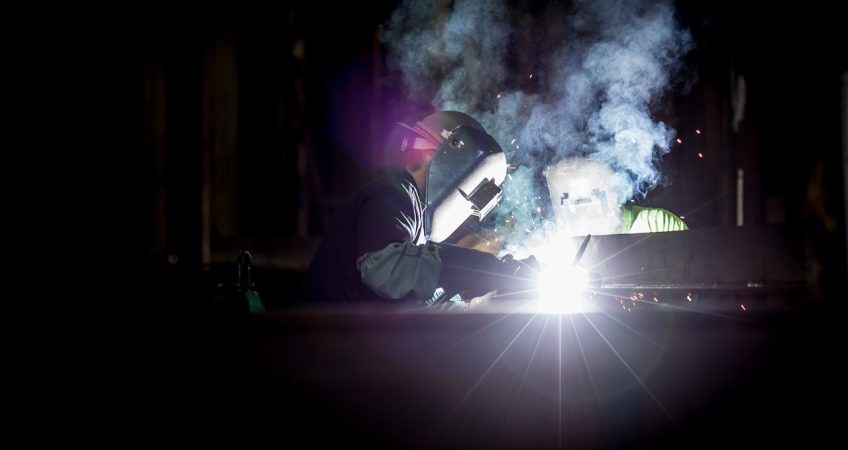Aluminum Properties
On your aluminum’s surface is an oxide layer that is crucial when it comes to working with this material. It’s a fast-acting process, forming almost instantaneously when we leave the metal open to the air. This makes it difficult to remove, even when we sandpaper the surface, reforming before welding can begin. It’s possible to think of any given aluminum piece as aluminum sandwiched between two layers of aluminum oxide.
Some further facts about aluminum include:
- Aluminum oxides melt at over 1000° C.
- Aluminum melts at roughly 660° C.
But this raises a problem. Apply a flame or arc to begin welding and you’ll immediately run into issues around those disparate melting points. At 660° C, the aluminum will have begun melting. Because the aluminum oxide layer is still there, however, a weld pool will not become available yet. The layer only melts at 1000° C. Once you raise the temperature appropriately, the backed-up molten aluminum releases suddenly and can splash everywhere, creating massive holes!
There are a few solutions, depending on which technique you choose to use to weld your metal.
Also Read: Home Renovation: Remodeling Guide
Gas Welding
Using Flux to decompose the aluminum oxide layer on your aluminum is the first option we’ll take a look at, today. As mentioned, it’s important to prevent that layer from reforming during the course of the welding. All things depending, this is the way to accomplish that.
You’re going to need oxy or acetylene equipment, not oxy, propane or propylene. It’s a process almost identical to gas welded mild steel. The only real difference, here, being an incredibly small margin of error!
Gas welded aluminum is really only an option for experienced welders, but it can be done, and the results are fantastic.
TIG Aluminum Welding
The TIG welding process is usually associated with aluminum welding and is popular for its relatively low difficulty level. It can be further subcategorized into two basic funnels: direct current (DC) output and alternating current (AC) output, with the process commonly known as AC / DC TIG welding. Welded aluminum, specifically, requires AC output, making AC / DC Tig Welding a perfect option.
MIG Aluminum Welding
The type of Mig Welder being used can be a serious factor in its success. That being said, Mig is also very useful for the purposes of welding aluminum. It’s important, in these cases, to use either a Teflon or plastic torch liner to keep the steel liner from scraping particles from the aluminum wire’s surface. This wire moves quickly through the liner so, ideally, you’ll need a ‘U’ shaped feed roller instead of the more common ‘V’ shape.
Pure Argon gas is an important starting point, where any mixture of Argon and Co2 would just make the weld more difficult to reproduce, reducing the strength of the weld itself. The aluminum’s thickness should be roughly half the thickness of any other steel, requiring more energy for the weld itself.

